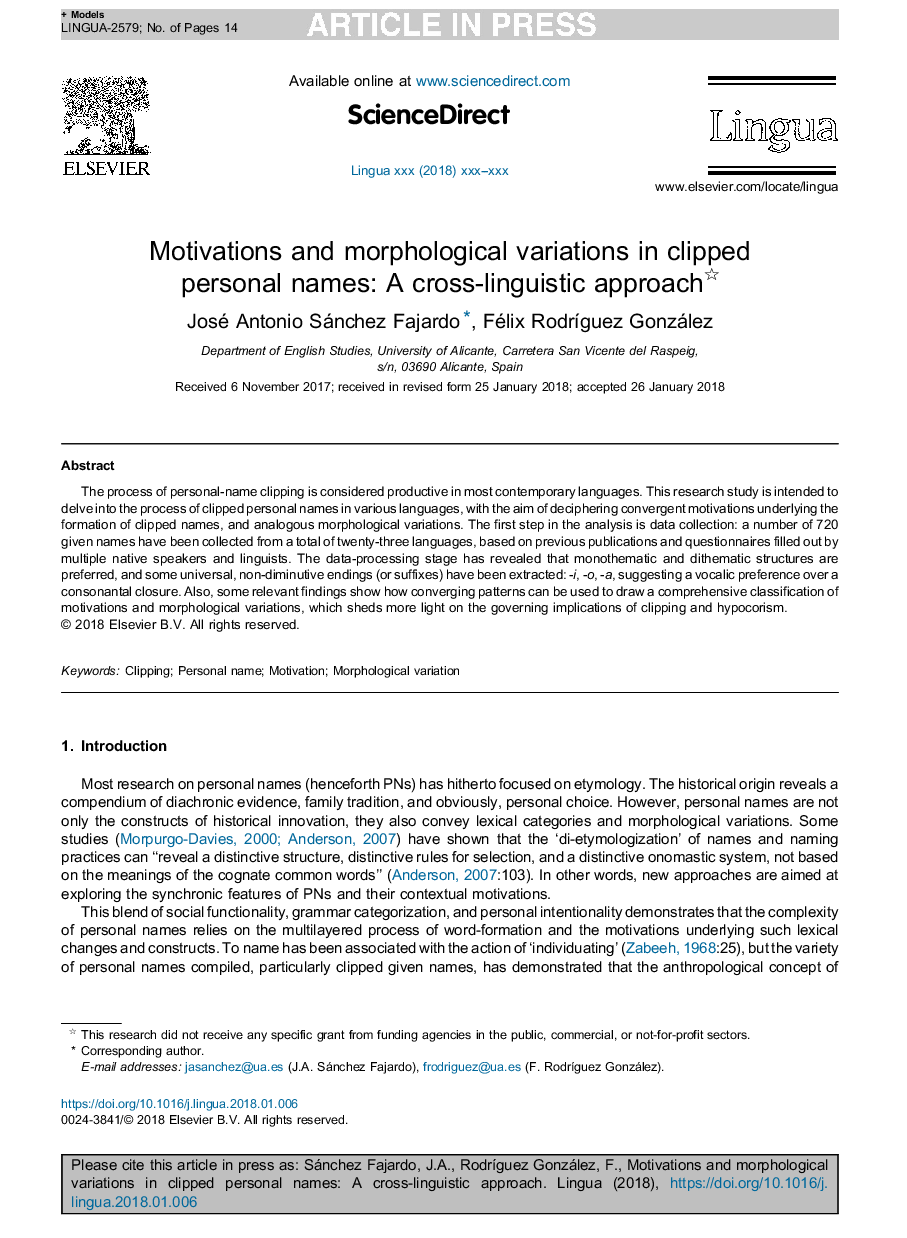| Article ID | Journal | Published Year | Pages | File Type |
|---|---|---|---|---|
| 7298363 | Lingua | 2018 | 14 Pages |
Abstract
The process of personal-name clipping is considered productive in most contemporary languages. This research study is intended to delve into the process of clipped personal names in various languages, with the aim of deciphering convergent motivations underlying the formation of clipped names, and analogous morphological variations. The first step in the analysis is data collection: a number of 720 given names have been collected from a total of twenty-three languages, based on previous publications and questionnaires filled out by multiple native speakers and linguists. The data-processing stage has revealed that monothematic and dithematic structures are preferred, and some universal, non-diminutive endings (or suffixes) have been extracted: -i, -o, -a, suggesting a vocalic preference over a consonantal closure. Also, some relevant findings show how converging patterns can be used to draw a comprehensive classification of motivations and morphological variations, which sheds more light on the governing implications of clipping and hypocorism.
Related Topics
Social Sciences and Humanities
Arts and Humanities
Language and Linguistics
Authors
José Antonio Sánchez Fajardo, Félix RodrÃguez González,
